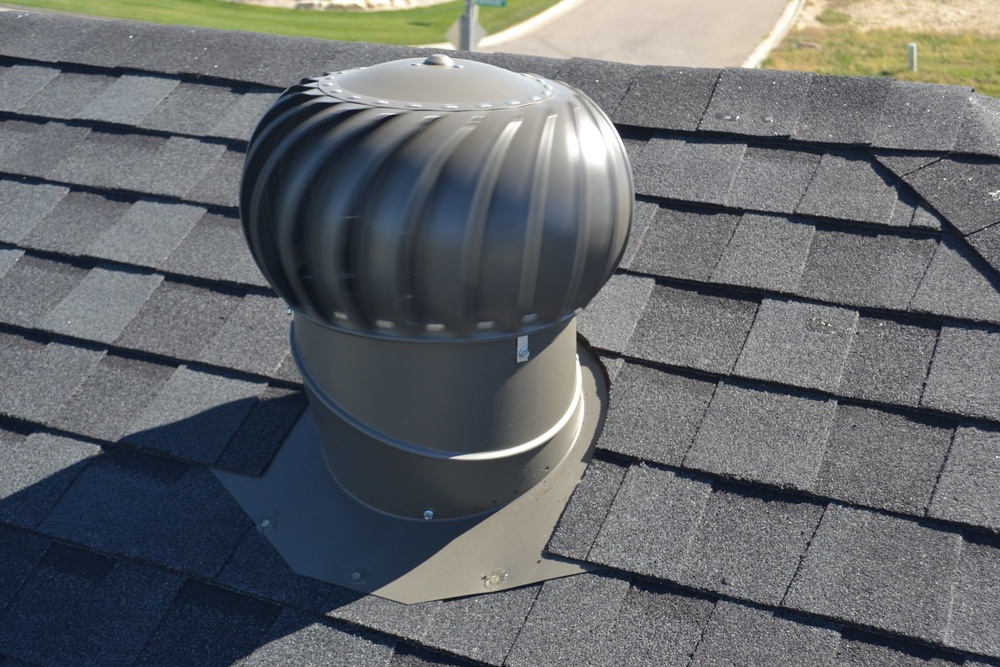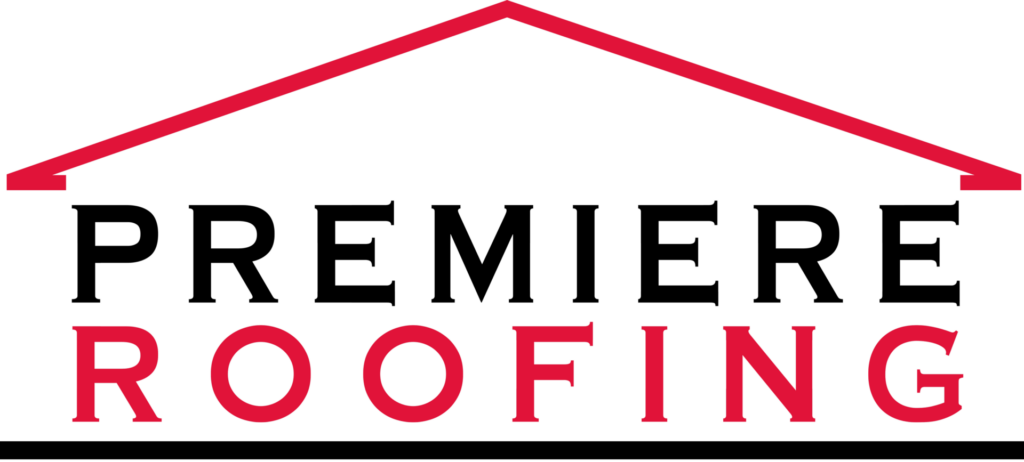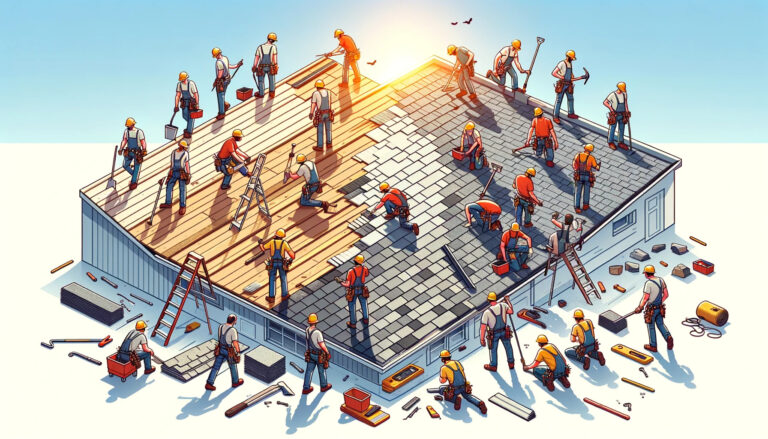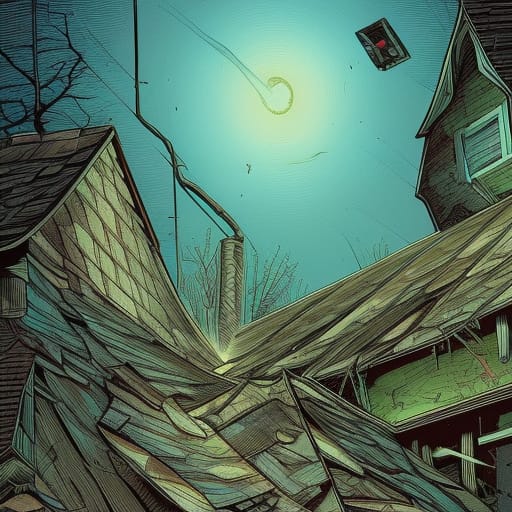One of the most common questions posed in regards to turbine roof vents is why they are effective at all. I deal with this every day. People don’t understand how or why having turbine roof vents can work or be an asset. They see that there’s a bunch of holes on the roof, which means the heat will escape even more right? Wrong. Let me explain further.
Turbine venting is one way to cool your home without using electricity. Still, the primary function is much more efficient than simply exhausting hot air from your attic- it can keep your home cool in ways you might never have considered before! To help you better understand how these ventilation systems work, here are the pros and cons.

THE PROS: WHY YOU SHOULD USE TURBINE ROOF VENTS
There are plenty of reasons why you should consider adding turbine roof vents to your home. First, they’re easy to install. It’s usually as simple as cutting a hole into the roof during a reroof and installing the new vent. With that being said it’s also a bit cheaper compared to some of the more luxury items such as ridge vent.
Another reason why turbine fans are great is how long they last compared to other types. It’s not uncommon for them to last 25 years or more, which means you only have to buy them once if you get the right kind. They can be used in all types of climates, including snowy ones where it might be too cold for regular vents to work correctly. This is because they use small rubber seals around the blades and a metal guard that protects against ice damage. If your home tends to get hot during summers when you’re using your air conditioning, then these are also better than standard fans because they move just as much air without using up as much energy to do so.

Turbine roof vents work by drawing hot air off your attic floor and exhausting it through a series of small openings at the top of the turbine. We all know that heat rises, so when we can draw up this hot air from underneath your house and push it outside, we’re actually relieving some of the strain on your home’s HVAC system. Nothing will cut down utility costs more than freeing up room within your existing HVAC system!
With a metal fan pushing air around them, these fixtures are more likely to weather high winds without being damaged or destroyed.
THE CONS: WHY YOU SHOULD NOT USE TURBINE ROOF VENTS
By their very nature, turbines are not meant to be wholly wind-tight or weather-proof. Because they ventilate through such a large number of slits in the fins, they are more susceptible to becoming clogged by large debris or wind-blown rain. Of course, turbine roof vents aren’t the only way that you can enhance your home’s ventilation system! There are other methods, but turbine roof vents have become very popular among homeowners for all the reasons listed above.
This next con isn’t really a con, but more of a personal preference. Turbines are just unsightly. They protrude from the roof nearly 1.5 feet. A lot of other ventilation is lower profile and blends into the roof.
My last con is that there are moving parts that are exposed to the elements. With that being said as long as you don’t get a hail storm or something else damaging the vent there should be no issue with it. Say it does become damaged though you may end up hearing it squeaking or rubbing on the outer lip of the vent and will need to replace it with a straight vent.
As with any ventilation system, there are disadvantages and advantages based on where you live. If you would like to know more about how these systems can benefit you, feel free to drop me a line! I’d be happy to help where I can.
OTHER TYPES OF VENTILATION THAT WOULD BE GOOD IN PLACE OF TURBINE ROOF VENTS.
Increasingly, more and more homeowners are thinking of changing out their old home’s ventilation for a brand new one. This is due to the fact that used homes are prone to be less comfortable compared with the newer ones; this is because they lack many things that can make them enjoyable places to live in. For instance, used homes usually have windows that leak air from inside, making them cold during the winter season. In addition to that, it also prevents fresh air from entering the home, resulting in a stuffy atmosphere.
One type of venting system that is gaining popularity these days is the “powered fan,” consisting of many small ventilating panels positioned just below the roof’s shingles. With this system, you would only have to open or close the slats depending on whether you need fresh air inside your home or not. It works with a thermostat, so it won’t let outside air get in when you don’t want it to.

Another ventilation system for homes is driven by solar energy, and it only requires minimal installation as compared to other methods since they use fewer components. The exhaust fan can be installed at any place with sunshine, and it has enough free space. The solar energy is collected by a panel and passed on to the fan, where it’s used to power the exhaust fan.
In addition to those mentioned, you can also find several other types of venting systems explicitly designed for homes. Most of which are just passive vents such as box vents and ridge vents. Just remember that it is very important to choose something that will make your home more comfortable and energy-efficient. It’s a good idea to consult with a professional when going through the process of selecting a particular type of ventilation system because they can give you much better advice compared with what you might search on the Internet for hours and still not learn anything new.
If you want to learn more about all the parts of a house roof check out our blog post going into all the details of what makes a good roof.
Conclusion
Turbine vents are pretty good at what they do. They are a solid selection when it comes to getting adequate ventilation at a good price. The only real downfall other than what we pointed out above is the look of the ventilation. It protrudes out of the roof and has moving parts that can make noise.
If you think you might have a damaged roof please reach out to us so that we can help you get your home back to the safe haven it’s supposed to be.
We serve residents in Sherman, McKinney, Dallas, Fort Worth, Frisco and more.
Call us at (888)-ROOF-NOW or contact us online through our form or live chat!




18 Responses
I live in the Stonebridge Ranch community of McKinney. The home has three pancake type attic vents on the roof (original to the house, ie, over 20 years ago). Would turbines (no fan) improve attic heat reduction? I am ok with the physical appearance. Approx cost??
Well I can not tell you exactly. I would need to know the size of your roof and where they are at.
We have a long house and I asked one roofer about having two turbine vents, I already had one and it works great cooling the attic. The roofer told me two turbines would negate each other. Is this correct?
The claim that two turbine vents would negate each other is not entirely accurate. The effectiveness of multiple turbine vents in cooling an attic depends on their proper placement, the size and design of the attic, and the overall ventilation system. While closely spaced vents might interfere with each other’s airflow, properly spaced multiple vents can enhance attic cooling. It’s important to maintain a balance between intake and exhaust vents and consider factors like attic size and local climate. Consulting with a roofing professional is recommended to determine the best ventilation strategy for your specific situation.
I live at the jersey shore and they are re coating the roof . not replacing it . they want to use these mechanical roof turbines . with they void the warranty of the coating of GAF ?
The information available on GAF’s website specifies the types of products covered under their limited warranty, which includes GAF Ridge Cap Shingles, GAF Starter Strip Shingles, GAF Leak Barrier Products, GAF Roof Deck Protection Products, and GAF Attic Ventilation Products. However, there is no specific mention of mechanical roof turbines or their impact on the warranty of GAF coatings.
For a detailed understanding of how the installation of mechanical roof turbines might affect the warranty of your GAF-coated roof, I recommend directly consulting the warranty documentation provided by GAF or contacting GAF customer support. This way, you can get information that is specific to your product and situation. You can find more detailed warranty information and contact details on their official website: GAF Roof Warranty and Comparison Guide.
how do roof turbines work during the winter. Do they not bring cold into the attic or do they remove the cold. Our house was built in 1890.
Roof turbines vent warm attic air in winter, which might increase heat loss, but they also prevent moisture damage. With good insulation, the impact’s small—cover them if heat loss is a concern!
I live in midcoast maine in a small house 20×20
story and a half high
My bedroom is on the second level
Warm in winter
Too hot in summer
Although I have a heat pump
Gut reaction is that I have to exhaust the hot air with a turbine
Gable end fans do not exhaust the hot air
I am at a loss as a 72 year old woman on her own
Can you advise?
Thank you
In your 20×20 Maine home, a roof turbine can exhaust hot attic air making your upstairs bedroom too hot in summer, despite your heat pump. One turbine with soffit vents should work for your size. It’s affordable ($50-$100 plus install) and low-maintenance—hire a roofer to set it up. Won’t affect winter warmth much if insulated!
How do they impact your home in winter time? I wouldn’t think that you’d want the hot air escaping but maybe it’s counter intuitive?
Roof turbines vent warm attic air in winter, which might increase heat loss, but they also prevent moisture damage. With good insulation, the impact’s small—cover them if heat loss is a concern!
I’m replacing the tile roof on my South Florida home. Attic is extremely hot in summer. If I install a wind driven turbo fan, can the HOA prohibit this or is it considered energy saving and HOA can not interfere?
In South Florida, a wind-driven turbo fan can help with your hot attic and is protected as an energy-saving device under Florida Statute 163.04. Your HOA can’t ban it but may set placement or appearance rules—check their docs and submit a plan!
I have 3 whirlybirds on my roof when the winds in Jan-April blow ( 15+ mph). Do I need 3 ? And they are very noisy, can I replace them with flat vents – should I have 1 solar vent for summer heat of +110?
Thanks for your comment! Three whirlybirds might be right for your roof size, but they can be noisy—replacing them with quieter flat vents is an option, though less effective. Adding a solar vent is smart for summer heat over 110°F. Check your attic’s ventilation needs with a calculator or a pro for the best setup!
One con that was not mentioned is the fact that a spinning turbine requires bearings and they wear out.
Thanks for the comment! You’re right, bearings wearing out is another con of turbine vents. I should add that to the post. Appreciate you pointing it out!